

Second-Wave Feminism: History, Main Ideas, Impact
Feminism believes all sexes and genders are equal and deserve equal opportunities. As a movement, feminism is a multi-faceted series of political ideologies, economic theories, and social identities spanning hundreds of years. To demystify the movement, many experts divide feminism into four waves . The first wave, which was most active in the United Kingdom and the United States, focused on voting rights for women. The second wave, which emerged many years later, had different priorities. In this article, we’ll discuss the wave’s history, its main ideas, and its impact.
Second-wave feminism focused on the legal, economic, and social rights of women. Its top priorities included gender roles, reproductive rights, financial independence, workplace equality, and domestic violence.
History: The first and second waves of feminism
There would be no second-wave feminism without first-wave feminism. While the term was coined in 1968, first-wave feminism was active in the 19th and early 20th-century in the West. Second-wave feminism started in the 1960s.
What was first-wave feminism about?
First-wave feminism focused on legal rights, specifically the right to vote or “suffrage.” In 1848, the Seneca Falls Convention took place. There, three hundred people met to discuss gender equality and what the movement should focus on. Early on, feminism was closely tied to the temperance and abolitionist movements, but while Black activists like Fredrick Douglass and Ida B. Wells-Barnett worked with both the feminist and civil rights movements, the beliefs and interests of white women dominated first-wave feminism. In 1920, the 19th Amendment was added to the US Constitution, giving women the right to vote. In 1928, women in the UK were granted equal voting rights.
What triggered the second wave?
The “waves” metaphor is imperfect as it ignores how complex feminist movements have always been, but generally speaking, second-wave feminism kicked off in the 1960s and lasted for two decades. Thanks to the first wave, women had significantly more legal rights, such as the right to vote and property rights. However, gender inequality persisted. In 1949, French writer Simone de Beauvoir wrote the groundbreaking book The Second Sex , which challenged the idea that biology determines gender differences. She argued that social constructs of gender lead to the view that women are inferior.
The ideas in The Second Sex resonated for years in feminist circles, and in 1963, Betty Friedan wrote The Feminine Mystique. This book criticized the reigning belief that women can only be fulfilled as stay-at-home mothers and wives. In reality, many women were unhappy. While Freidan’s ideas were not new or even especially original, The Feminine Mystique had an enormous reach. Freidan and de Beauvior’s books, along with events like the availability of the oral contraceptive pill, the Civil Rights movement , and legislation like the Equal Pay Act of 1963, formed the backbone of second-wave feminism.
What were the main ideas of second-wave feminism?
First-wave feminism focused on legal rights, but what were second-wave feminists concerned about? Here are five of the movement’s central ideas:
Traditional gender roles restrict women
The suffragettes of feminism’s first wave weren’t focused on expanding gender roles or dealing with stereotypes. Most of the women were very conservative by modern standards. The belief that being a wife and mother was a woman’s ultimate purpose continued for decades. In the 1950s, women were pressured to marry, have children, and take care of the household while their husbands worked. In the United States, it even fused with Cold War propaganda , which proclaimed that the nuclear family (husband, wife, and children) was what gave America the edge over the Communists. While women could technically work (and many did, especially women of color), they were viewed as less “feminine” because of it.
Second-wave feminism challenged stereotypes and gave voice to women who weren’t fulfilled in traditional gender roles. Many sub-types of feminism emerged during this time, with some saying that women couldn’t be liberated until family, private property, and the state itself were broken down. Others advocated for less extreme ideologies, but all activists were deeply interested in analyzing how gender roles restricted women.
Reproductive rights are essential to equality
Reproductive rights were another issue first-wave feminists didn’t spend too much time on. The second wave, however, made reproductive rights one of its pillars. Agency over one’s body and the ability to make decisions regarding children, reproductive health, and more have massive consequences for a person’s life. While abortions have always been performed, they were once illegal in most places around the world. As an example, an 1861 law in the UK made performing an abortion or attempting to self-abort a crime punishable with life imprisonment.
Second-wave feminists focused on reproductive health and abortion rights. In 1960, the Food and Drug Administration in the United States approved the world’s first commercially produced birth control pill. In 1973, the Supreme Court ruled that the Constitution protected the right to an abortion. Across the world, feminists lobbied for laws that protected and expanded reproductive rights, circulated literature that educated women and their families, and built networks that supported reproductive health and justice.
Women deserve financial independence
The concept of credit cards, which let you buy goods and services and pay later, has been around since ancient times, but credit as we know it is fairly new . In 1950, the first universal credit card arrived courtesy of Diners Club. It was first used to pay for restaurant meals, but it soon expanded to other services. By 1953, Canada, Mexico, Cuba, and the UK accepted Diners Club member cards. American Express launched the first plastic charge card in 1958. Credit cards were convenient as they ended the need to carry cash or a checkbook everywhere. Consumers could also delay payments until they could pay off the debt.
Credit cards weren’t available to everyone when they were first launched. If a woman wanted a credit card, she needed a man to co-sign. It wouldn’t be under her name, either, even if she was the one making all the payments. Women were considered “riskier” for banks. In the US, the Equal Credit Opportunity Act in 1974 made this discrimination illegal, while the UK passed a similar law in 1975.
The workplace should be equal
Women have always worked, but their labor has historically been undervalued. They’ve also been restricted from certain careers based on education or perceived ability. During WWII, as men left their jobs to fight, women in the US and UK took their places as mechanics, engineers, and other “masculine” roles. When the war ended, many women left their jobs – or were fired – but they’d proven they could work just as successfully as men. Second-wave feminism prioritized women’s careers.
According to an archived New York Times article from 1973, women accounted for ⅔ of the gains in total US employment in the 1960s. In certain jobs, like bookkeeping, they accounted for half of the increase. They were met with sexist coworkers and bosses. The word “sex” was included in the Civil Rights Act of 1964, which opened the door to lawsuits against sex discrimination in employment. Feminists still faced a battle. Until 1978, it was legal to fire a woman for getting pregnant. Second-wave feminism fought for equality and safety in the workplace through legal protections against harassment and discrimination, as well as better pay.
Domestic violence is a serious problem
For years, violence against women was not just ignored, it was normalized. A man hitting his wife for “corrective purposes” was considered his right. While excessive or disruptive violence was not encouraged, it was a community crime and not a crime against the woman herself. By 1920, all US states made wife-beating illegal, but punishments were mostly mild. By the 1960s, women had significantly more rights, but the scope and scale of domestic violence were not recognized.
Second-wave feminism drew attention to domestic violence and its many forms by opening shelters and rape crisis centers. In 1972, the first emergency rape line opened in Washington, D.C. The next year, the term “domestic violence” was used for the first time at a UK Parliament address. Feminists also pushed for changes to the law. Before the 1970s, marital rape was legal in every part of the United States. Michigan and Delaware partially outlawed it in 1974. By 1993, it was a crime nationwide.
What was the impact of second-wave feminism?
Second-wave feminism built on the legacy of the first wave to shift women’s place in society through culture, legislation, and victories in court. While the feminists of the first wave had focused on the voting and property rights of a small group of women, second-wave feminists fought to expand the definition of womanhood, ensure reproductive rights, increase financial independence, improve workplace equality, and address domestic violence.
Despite its many victories, some experts believe the work of second-wave feminism was never completed. The Equal Rights Amendment, which was first proposed in 1923, would end legal distinctions between men and women regarding employment, property, divorce, and more. It was a major focus of the second-wave feminist movement , but it ultimately did not achieve ratification. Second-wave feminism was also criticized at the time (and today) for not paying attention to the needs and struggles of women of color. Feminists like Audre Lorde, Angela Davis, and bell hooks frequently discussed this alienation, which intersected with class and sexuality, as well as race. Their work, as well as the work of many other activists, heavily informed the next phase of feminism: the third wave of the 1990s.

We inspire, educate, equip everyone for a career in human rights. We also provide information about online courses, jobs, paid internships, masters degrees, scholarships and other opportunities in the human rights sector and related areas.
About us Our Team Advertise Our Partners Contact us Post a Job
Magazine Courses Masters Internships Issues Job board

Subscribe to our newsletter
Get free updates about online courses, paid internships, bachelor's and master's programs, scholarships, summer schools and other educational opportunities delivered to your inbox.
© Human Rights Careers Reg. no. FN 534686 d | VAT: ATU75556337

Feminism: The Second Wave
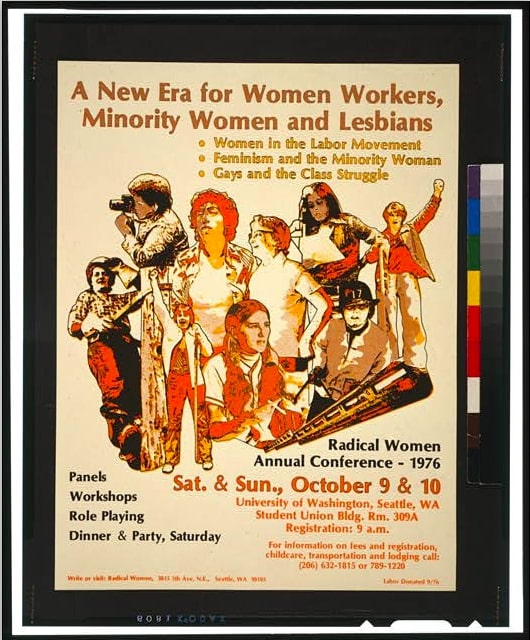
FEMINISM : The Second Wave
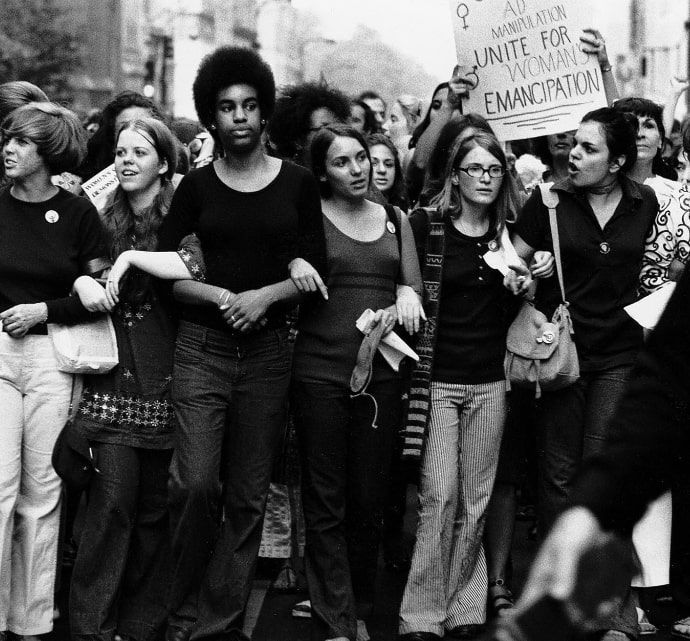
The Second Wave
After the ratification of the 19th amendment in 1920, which granted women the right to vote, the first wave of feminism slowed down significantly. Although many of these activists continued to fight for women’s rights, the next sustained feminist movement is believed to have started in the 1960s. Much like the first wave that developed during a period of social reform, the second wave also took place amidst other social and political movements.
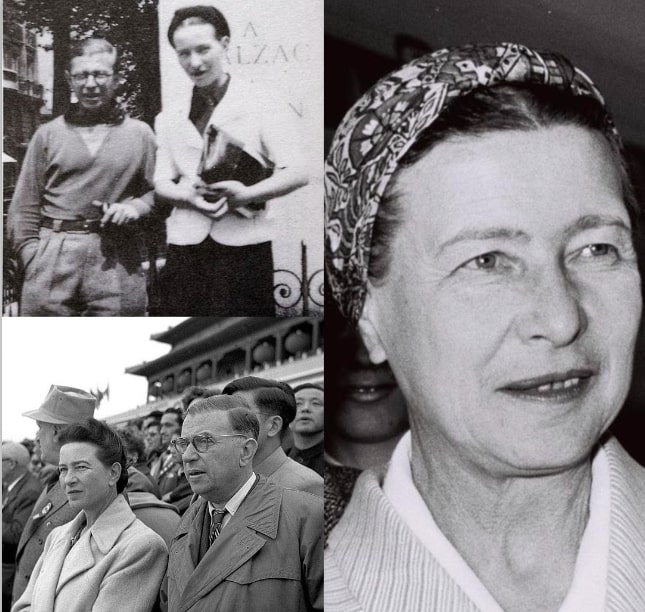
The Predecessor
In between the first and the second wave, French feminist author Simone de Beauvoir published a foundational book that set the tone for the next surge of women’s rights activism. Published in 1949, her book entitled “The Second Sex,” provided extensive definitions of womanhood and outlined how women have historically been treated as second to men. Originally published in France, “The Second Sex” quickly became a phenomenon and was published in the United States in 1953. Beauvoir was not only a feminist writer, but she was also considered a philosopher because her writings often answered complex and philosophical questions. In “The Second Sex,” she questions, “What is a woman?” Ultimately, she determined that “one is not born but becomes a woman.
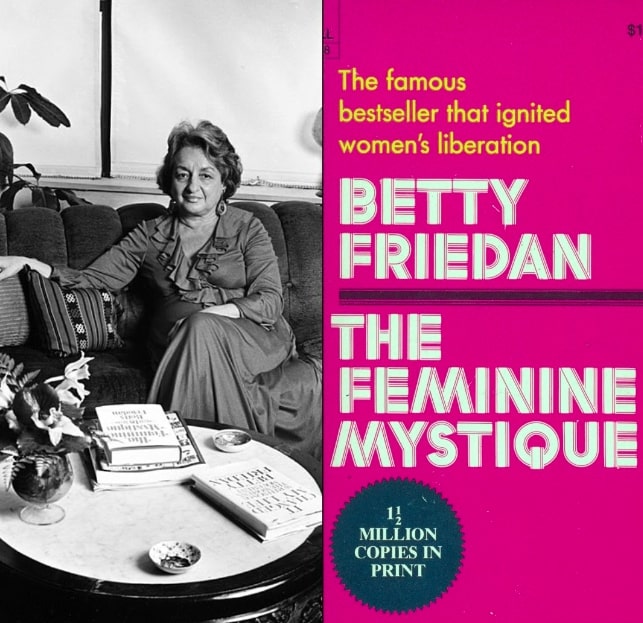
The Instigator
Ten years after “The Second Sex” was published in the United States, American feminist writer Betty Friedan helped ignite the second feminist wave with her book “The Feminine Mystique.” Released in 1963, Friedan builds on the foundation of Simone de Beauvoir’s work. However, Friedan not only employed philosophical thought to discuss feminism, she also incorporated oral histories and her personal experiences to address the issues many women were facing. Friedan first began by researching the role of women in society to see if other women shared her feelings of dissatisfaction and “malaise” as housewives. To her surprise, she was not alone, and her interviews became the source material for her first book.
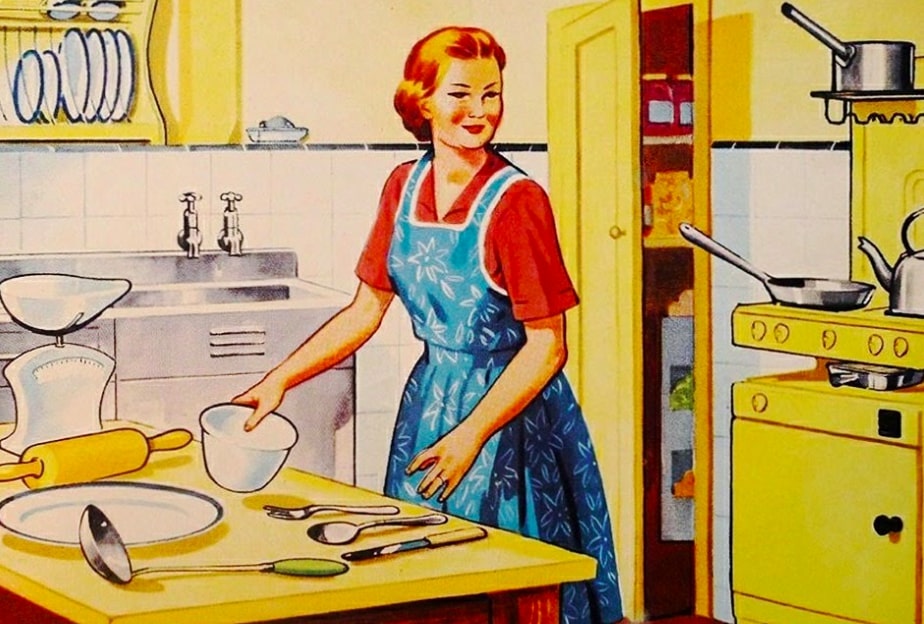
In the mid-1950s, Friedan found herself as a stay-at-home housewife after a long career as a journalist, writer, and activist. When she got married and had children, Friedan left her career and moved to the suburbs with her family. Even though she continued writing freelance, she soon realized that she was unhappy solely as a housewife. However, she felt the societal pressure to find ultimate happiness as a mother and a homemaker. In 1957 at her 15-year Smith College reunion, Friedan surveyed her classmates and found that they also were unhappy being confined to the home.
For the next five years, Friedan conducted interviews with white middle-class women who were grappling with their roles as housewives. She published her findings in “The Feminine Mystique,” and instantly became a household name. In her book she criticized the separate “sphere” of motherhood and homemaking that women were relegated to. In contrast, men were allowed to flourish in the “male sphere” of work, politics, and power. Friedan’s book encouraged women to step outside of their “sphere,” and fight gender oppression, which she called “the problem that has no name.”
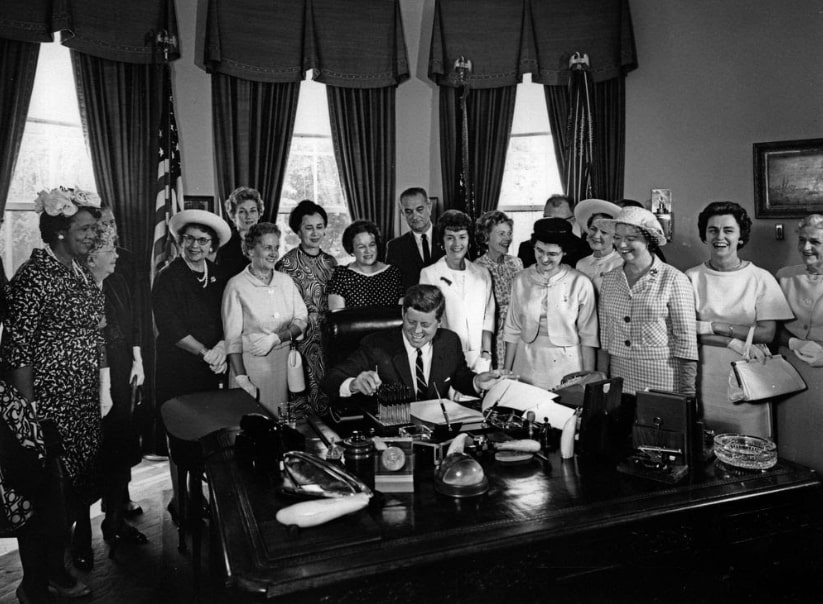
The Movement Begins
Friedan’s book sold over three million copies within the first three years and quickly fueled a resurgence of the feminist movement. Middle-class women across the country began to organize to advocate for women’s social and political equality. The same year “The Feminine Mystique” was published, President John F. Kennedy signed the Equal Pay Act of 1963 into law. The new legislation stipulated that women could no longer be paid less than men for doing “comparable work” at the same job. This Act was the result of a group of women in the White House, lead by labor activist Esther Peterson. Peterson was appointed as the head of the Women's Bureau in the Department of Labor in 1961. She convinced President Kennedy to establish a Presidential Commission on the Status of Women to work towards achieving equality. The commission included revolutionary women such as Eleanor Roosevelt and Dorothy Height. After collaborating with the commission, Peterson submitted a draft of the Equal Pay Act to congress on behalf of the Kennedy administration.
“Public service announcement (PSA) informing viewers of their rights under the equal pay law.”
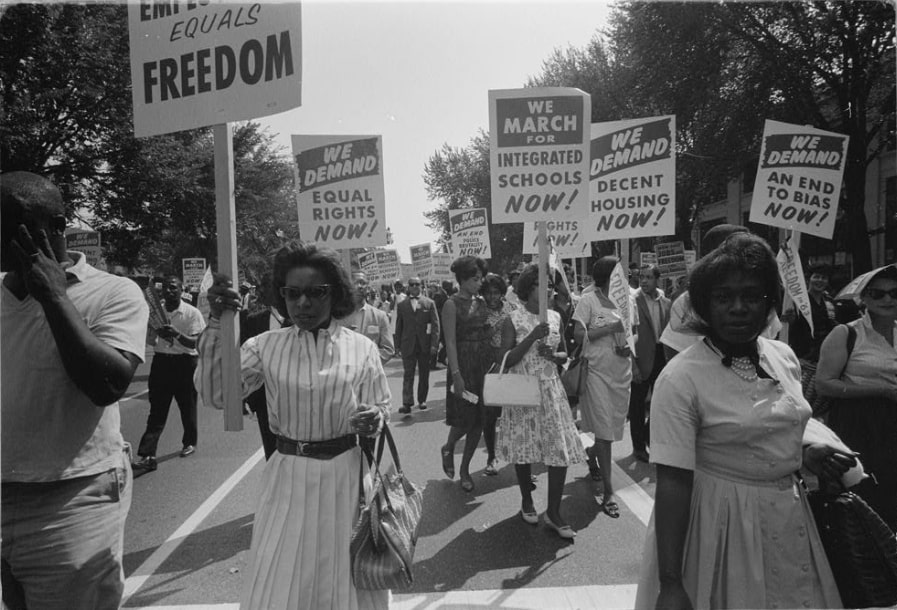
Following the Equal Pay Act of 1963, two more legal victories propelled the fight for women’s rights forward. Title VII of the Civil Rights Act of 1964, and the Griswold v. Connecticut Supreme Court ruling of 1965 both secured rights for some feminists and encouraged them to continue to advocate for women’s equality.
Title VII of the Civil Rights Act of 1964 prevented employers from discriminating against employees on the basis of race, religion, sex, or national origin. In addition to the Civil Rights Act, the Griswold v. Connecticut Supreme Court ruling of 1965 prevented anyone from limiting a woman’s access to contraception or other methods of birth control. This case would be used in the famous Roe v. Wade decision, protecting a woman’s right to have an abortion in 1973.
These legal victories gave some women more autonomy in both public and private life. However, many women of color were still disenfranchised.
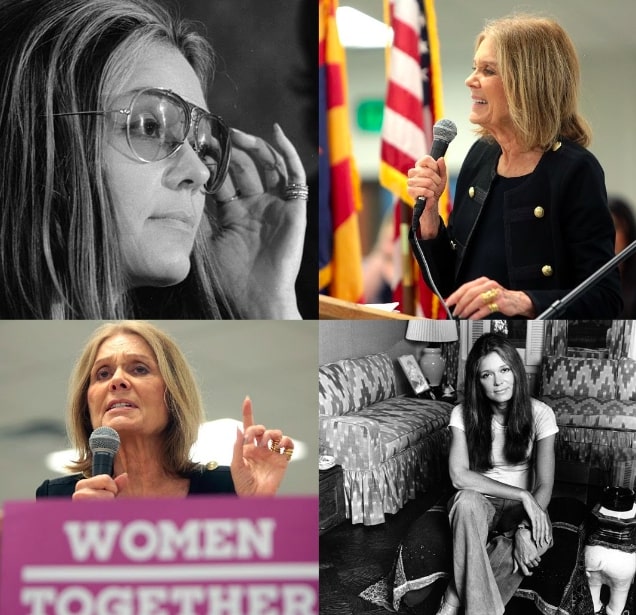
The Women's Liberation Movement
Early in the second wave, feminist writer Gloria Steinem gained national attention by going undercover as a Playboy Bunny. Her exposé called “A Bunny's Tale,” highlighted the sexism and low wages that women faced in these clubs. Steinem went on to become one of the most recognizable leaders of the second wave. She co-founded both “New York” and “Ms.” magazines and covered political issues ranging from abortion to rape. Steinem first spoke publicly in 1969 at an event to legalize abortion in New York State. Shortly afterwards, she began writing and publishing books that would influence a generation of feminists. Her publications accompanied a host of other feminist work that was published during the period that became the women’s liberation movement. Some of these books include; Kate Millett’s “Sexual Politics” in 1969, Juliet Mitchell’s “The Subjection of Women” in 1970, and Shulamith Firestone’s “The Dialectic of Sex: The Case for Feminist Revolution” in 1970.
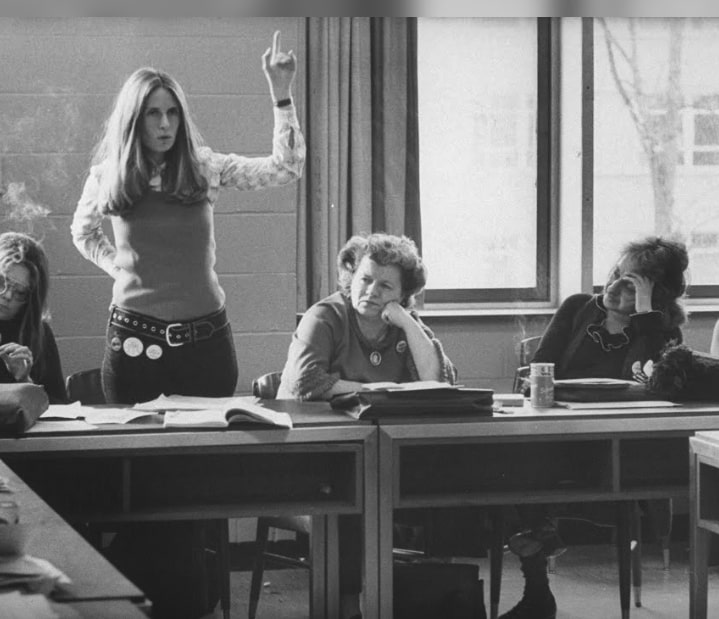
In 1972, Steinem teamed up with Betty Friedan and other activists such as Congresswoman Bella Abzug and Congresswoman Shirley Chisholm to form the National Women’s Political Caucus. This caucus was established to support gender equality and ensure proper women’s representation in political office. At the founding meeting, Steinem delivered a speech entitled “Address to the Women of America,” where she called for a women’s revolution.
That same year, the Equal Rights Amendment (ERA) proposed by Alice Paul in 1923 finally passed in Congress. Unfortunately, this amendment guaranteeing equal constitutional rights for women failed to be ratified in 38 states within seven years. Supporters of the ERA continue to fight for it’s ratification today.
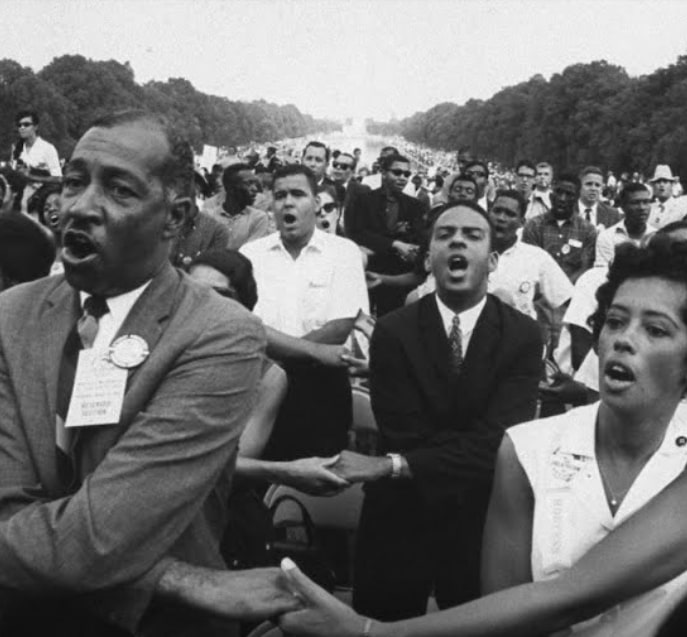
The Civil Rights Movement
When the second wave of feminism began, the Civil Rights Movement was already in full swing. After emancipation, African American men and women still had to fight against racism, violence, and segregation to exercise their basic human rights. In addition, even after the ratification of the 19th Amendment ensuring that both men and women were able to vote, African American men and women were still restricted from voting by Jim Crow laws, literacy tests, and grandfather-clauses. As the second surge of feminism grew, African American women were once again fighting for their rights as women, alongside their fight for freedom from racial oppression.
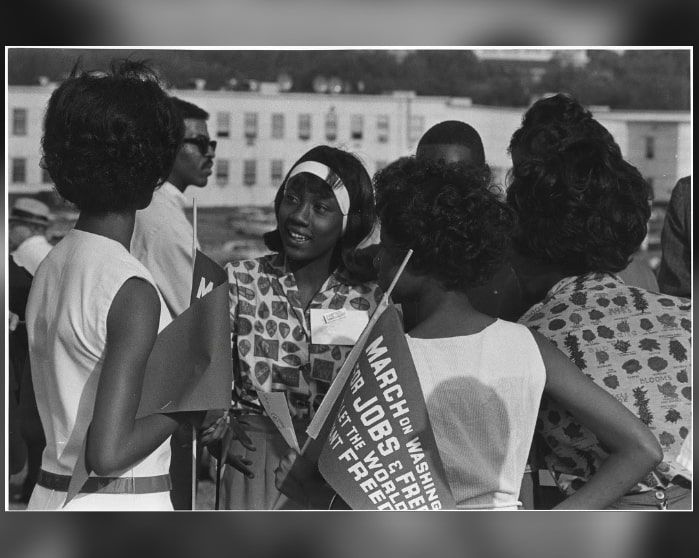
In 1969, Frances M. Beal published “Double Jeopardy: To Be Black and Female,” detailing the experiences of African American women during the feminist movement. Her essay specifically noted the exploitation of black women in society and the different struggles between white and “non-white” feminists.
That same year, Betty Friedan stepped down as president of the organization she co-founded called the National Organization for Women (NOW). Although the organization was racially inclusive, the concerns of black women were frequently sidelined. For example, Friedan and some of the African American members clashed over Friedan’s use of the Civil Rights Act of 1964 to advocate for more jobs for middle-class white women, when many African American men and women faced racially motivated job discrimination and lived below the poverty line. By the time Friedan stepped down in 1969, African American women had already started forming their own feminist organizations.
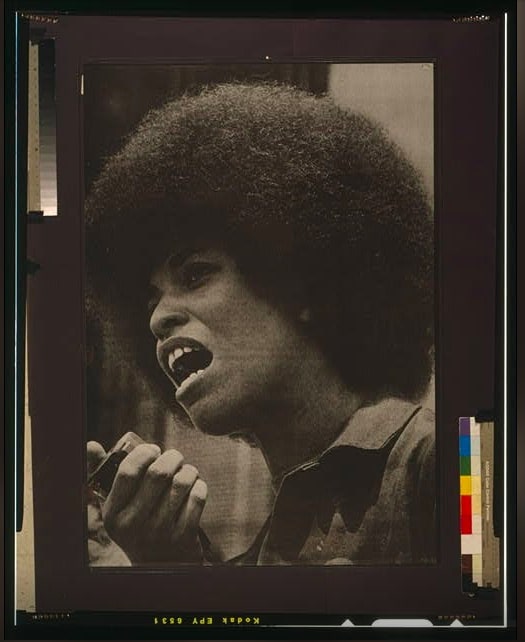
By the 1970s, black women were convening as separate feminist organizations starting with the National Black Feminist Organization (NBFO) in 1973. The Combahee River Collective formed in 1974 for a similar purpose, but they also focused on issues of sexuality that were often left out. Their statement notes, “we are committed to struggling against racial, sexual, heterosexual, and class oppression…” and the way those systems of oppression intersect.
As these women pursued their collective goals, revolutionary scholar and activist Angela Davis began publishing articles and books that would contribute to the foundation of the “Black Feminist” movement. She published an article on the harmful stereotypes of black women in society in 1972 and then followed that with her book entitled, “Women, Race & Class” in 1981. The Combahee River Collective and “Women, Race & Class” both provided a solid foundation for future feminists to study various forms of oppression.
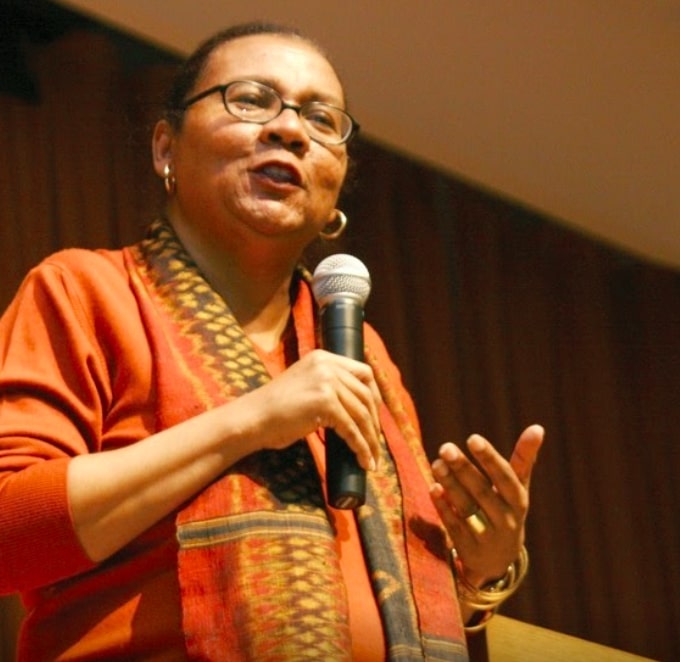
Rethinking Feminism
”Although the women’s movement motivated hundreds of women to write on the woman question, it failed to generate in-depth critical analyses of the black female experience.” --bell hooks in “Ain’t I a Woman: Black Women and Feminism”
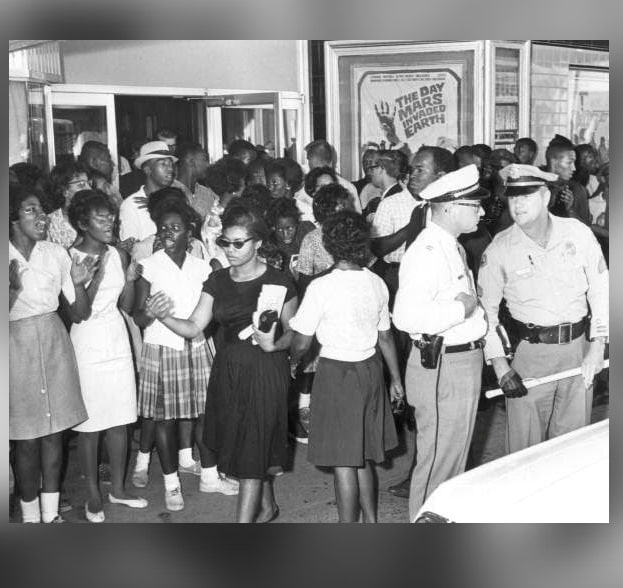
Also writing in 1981, author Gloria Jean Watkins, known as “bell hooks,” published “Ain’t I A Woman? Black Women and Feminism.” Her book provides an analysis of the current movement and a critique of mainstream feminism for excluding the concerns of black women in their overall fight for equality. Instead, she provides an inclusive method for activism through black feminism. She states, “although the focus is on the black female, our struggle for liberation has significance only if it takes place within a feminist movement that has as its fundamental goal the liberation of all people.”
After her pioneering work, many feminist writings followed that addressed the concerns and activism of women of color. One of these books was “This Bridge Called My Back: Writings by Radical Women of Color” edited by Cherríe Moraga and Gloria E. Anzaldúa in 1981. This work included several writings from black, Native American, Asian American, and Latina women feminists that advocated for their rights in the white-dominated feminist movement.
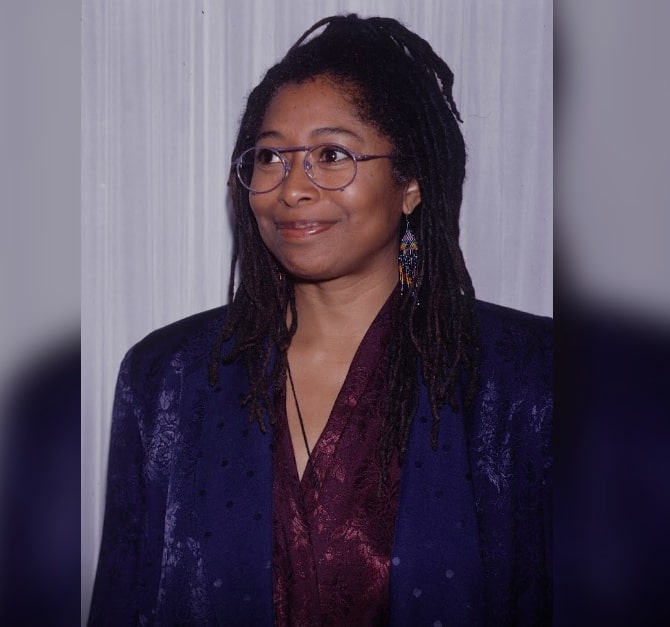
Although many African American women identified with hooks’ writing, Alice Walker introduced a new variation of black feminism called “womanism.” Coined by Walker in her 1983 book “In Search of Our Mothers’ Gardens: Womanist Prose,” Walker introduces readers to womanism through a collection of personal and political essays. Developed from the African American cultural significance of the word “womanish,” Walker writes that a womanist is “committed to survival and wholeness of entire people, male and female. Not a separatist, except periodically, for health.”
Womanism is closely aligned with black feminism and many people use the two terms interchangeably. Walker herself notes that the womanist is “a black feminist or feminist of color.” However, Walker also says: “Womanist is to feminist as purple is to lavender.” With this analogy, Walker reminds her audience that there are many different forms and shades of feminism. Walker’s novel “The Color Purple” also became a film directed by Steven Spielberg, featuring Oprah Winfrey and Whoopi Goldberg.
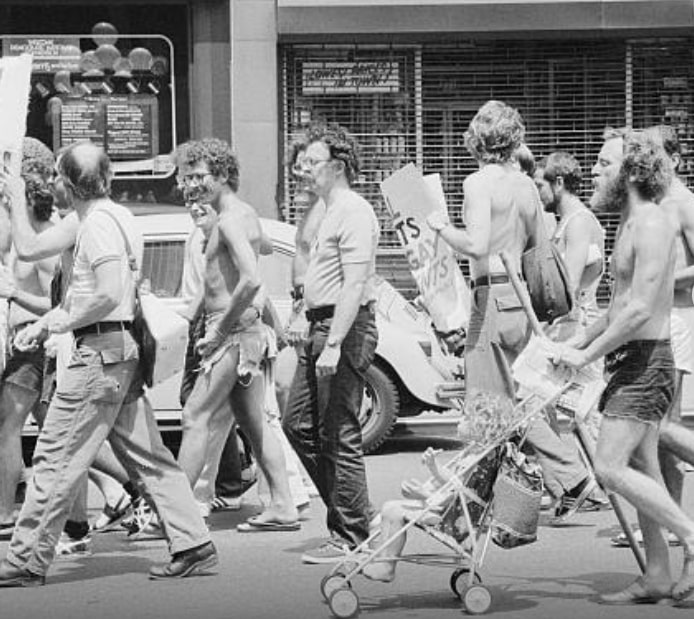
The Gay Rights Movement
Women of color weren’t the only group fighting for their voice in the larger feminist movement. During the 1960s, the gay rights movement also gained momentum as participants advocated for equal rights and unbiased information about homosexuality. The first gay rights demonstrations were held in Philadelphia and Washington, D.C. as early as 1965. However, the riots at the Stonewall bar in 1969 marked a shift in LGBTQ activism. Starting on June 28, 1969, customers of the Stonewall Inn in New York’s Greenwich Village fought against targeted and frequent police raids.
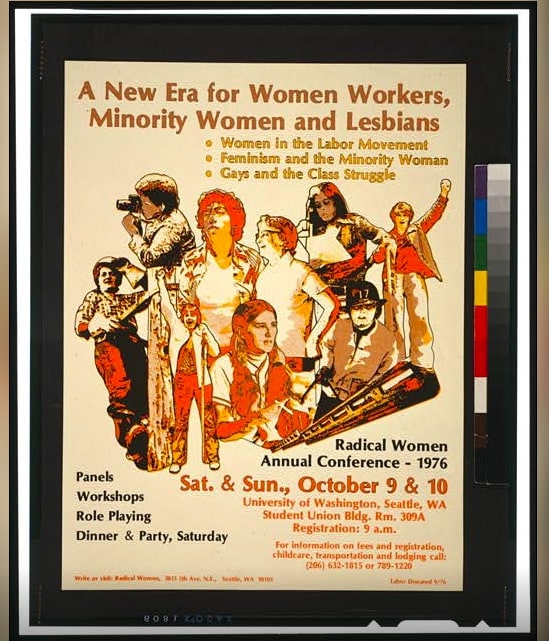
As the movement progressed, lesbian women had concerns that were not addressed by gay rights activism. Many of these women decided to leave the male leadership of that movement to form their own lesbian organizations. These women advocated for gay rights, as well as feminist rights within organizations like Betty Friedan’s National Organization for Women (NOW). Unfortunately, many of these mainstream feminists rejected their participation. Lesbian women protested their treatment, including a demonstration at the Second Congress to Unite Women in 1970. These women called themselves the “Radicalesbians” and they read their declaration called “The Woman-Identified Woman” to the attendees. The very next year, the NOW adopted a resolution recognizing lesbian rights, and in 1973 they established the NOW Task Force on Sexuality and Lesbianism. Simultaneously, Lesbians of color like Audre Lorde started writing about their particular experiences. Lorde published "Sister Outsider: Essays and Speeches" in 1984.
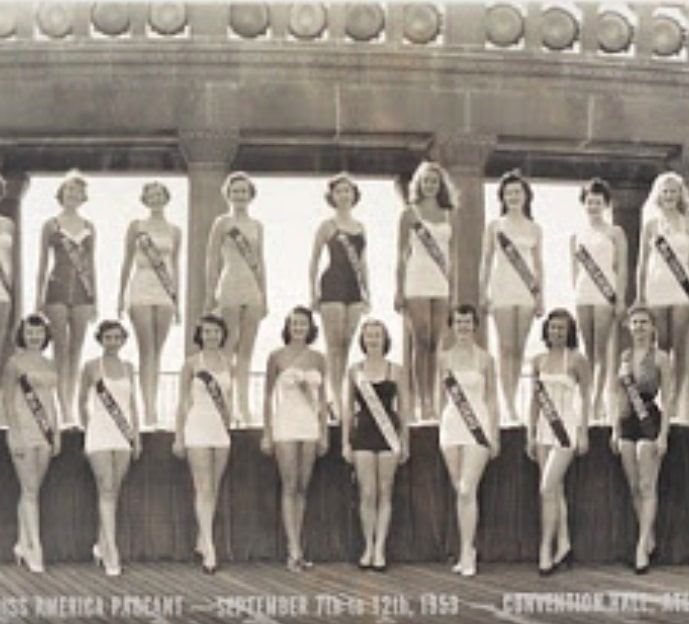
Bra Burning Women
The second wave of the feminist movement is not only known for the tensions between various streams of feminism. This wave is also heavily associated with the “bra-burning” protest of 1968. Although no bra-burning actually occurred, this myth continues to follow the women’s liberation movement. This rumor came from the 1968 Miss America Pageant protest in Atlantic City, New Jersey. On September 7, 1968 a few hundred women interrupted the live broadcast of the Miss America Pageant to protest beauty standards and the objectification of women. These women threw bras, high heels, Playboy magazines, and other symbolic feminine products into a “Freedom Trash Can.” Although the women did not actually ignite a fire, a reporter compared their actions to Vietnam war protesters that would burn their draft cards. This idea of bra-burning feminists followed the movement ever since and contributed to the stereotype of feminists as angry and “man-hating.”
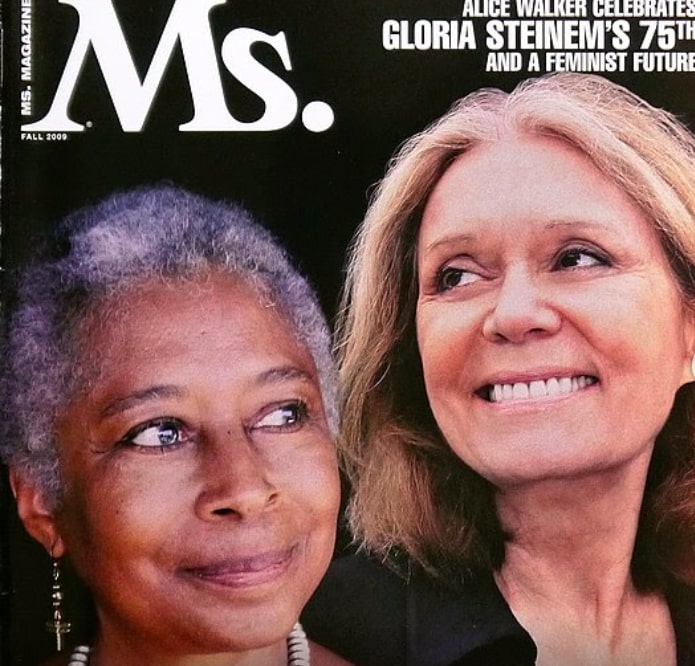
By the late 1970s, the second wave of feminism began to lose steam. As multiple sub-groups created new organizations for themselves, other debates within feminism grew. One of the key debates was over pornography and sexual activity. Many feminists decided between being “anti-porn feminists” or “sex-positive feminists.” These debates accelerated an already dwindling larger movement. By the early 1980s, the second wave came to a close and a large-scale feminist movement would not return for another decade.
Exhibit written and curated by Kerri Lee Alexander, NWHM Fellow 2018-2020
Davis, Angela Yvonne. Women, Race & Class. London: Womens Press, 1986.
D’Emilio, John. “After Stonewall.” Queer Cultures. Eds. Deborah Carlin and Jennifer DiGrazia. Upper Saddle River, NJ: Pearson, 2004. 3-35.
Friedan, Betty. The Feminine Mystique. New York: W.W. Norton & Company, 2013.
Gay, Roxane. “Fifty Years Ago, Protesters Took on the Miss America Pageant and Electrified the Feminist Movement.” Smithsonian.com, January 1, 2018. https://www.smithsonianmag.com/history/fifty-years-ago-protestors-took-on-miss-america-pageant-electrified-feminist-movement-180967504/.
hooks, bell. Aint I a Woman: Black Women and Feminism. New York: Routledge, 2015. Pp. 12
Lee, Jennifer. “Feminism Has a Bra-Burning Myth Problem.” Time Magazine, June 12, 2014. https://time.com/2853184/feminism-has-a-bra-burning-myth-problem/.
Love, Barbara J. Feminists Who Changed America, 1963-1975. University of Illinois Press, 2006.
Morris, Catherine, Rujeko Hockley, Connie H. Choi, Carmen Hermo, and Stephanie Weissberg. We Wanted a Revolution: Black Radical Women, 1965-85: a Sourcebook. Brooklyn, NY: Brooklyn Museum, 2017.
Morris, Bonnie J. “History of Lesbian, Gay, Bisexual and Transgender Social Movements.” American Psychological Association, 2009. https://www.apa.org/pi/lgbt/resources/history.
Walker, Alice. In Search of Our Motherss Gardens: Womanist Prose. San Diego: Harvest, 1984. Pp. xii
